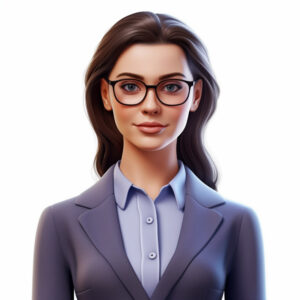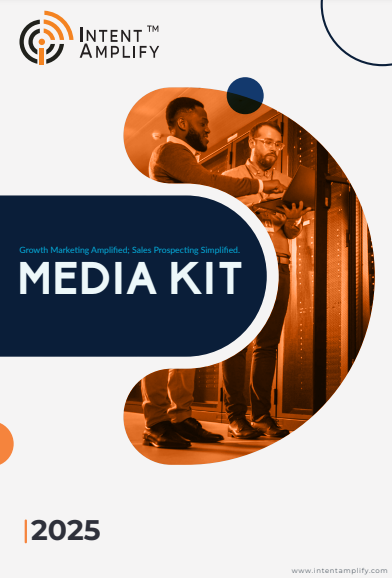
Generating Demand at an Enterprise Level: Strategies for Success
- Last updated on: May 24, 2024
Most business owners find enterprise-level demand generating has become very challenging. They rely on growth and performance marketers to scale their demand generation tactics in a competitive market. If done with the right intent data, marketers can create genuine interest and demand for their products and services in a crowded marketplace. It all boils down to the effectiveness of demand generation strategies in real business use cases. Best-performing companies use enterprise demand generation strategy to generate a buzz, expand reach, drive traffic, and ultimately grow the customer base by transforming interest into action.
The Importance of a Multi-Faceted Approach
Generating demand at an enterprise level is crucial for sustaining growth and staying competitive. This involves a strategic multi-faceted approach combining content marketing, omnichannel strategies, relationship building, and data-driven intent optimization.
Actionable Insights for B2B Marketing Teams
In this article on enterprise-level demand generation strategy for B2B marketing teams, we explore the best-performing methods, offering actionable insights to help enterprises drive demand effectively.
Content Marketing for Thought Leadership
Any enterprise-level demand generation strategy thrives on its ability to make the company’s solution the best possible answer to a genuine customer’s pain point. This can be done by educating the customer about their problem and offering alternative solutions. For that, high-quality content is imperative.
Develop High-Quality Content:
To position your enterprise as an industry leader, focus on creating high-quality content for each stage that addresses the specific challenges faced by your target audience. This can include:
- White Papers: Provide in-depth reports that provide comprehensive insights into industry trends and solutions.
- Case Studies: Real-world examples demonstrating how your products or services have successfully addressed client needs.
- Webinars: Live or recorded sessions where experts share knowledge and engage with the audience.
- Blog Posts: Regularly updated articles offering tips, trends, and thought leadership pieces.
The key is to provide valuable insights rather than merely pitching your products. Your content should educate, inform, and build trust with your audience.
Target the Buyer’s Journey:
An enterprise caters to a diverse set of audiences depending on its offerings. Not just that, everyone is at a different stage of the demand generation process – awareness, consideration, and purchase. Tailor your content to cater to the different stages of the buying process:
- Awareness Stage: Provide informative content that helps potential customers understand their problems and introduces them to potential solutions.
- Consideration Stage: Offer more detailed information about your solutions, such as comparison guides or product features.
- Decision Stage: Present case studies, testimonials, and free trials to help prospects make informed purchasing decisions.
By aligning your content with the buyer’s journey, you can effectively guide prospects from initial awareness to final purchase.
Leverage Diverse Formats:
Different people prefer different types of content. To maximize engagement, diversify your content formats:
- Infographics: Visual representations of data or processes that are easy to understand and share.
- Videos: Engaging and versatile content that can explain complex topics quickly.
- Interactive Content: Quizzes, calculators, and interactive infographics that engage users more deeply.
Using a variety of formats helps you reach and engage a broader audience, catering to different learning styles and preferences.
Omnichannel Marketing for Broad Reach
Most enterprises offer a range of products and services. Each product or service may have a separate customer base and channel preference. It is also known that a customer interacts with 6 to 7 touch-points before making the purchase. So the key enterprise demand generation strategy is to be present at the right places at the right time and with the right message.
Be Present Across Multiple Channels:
To reach a wider audience, your marketing efforts need to be omnichannel:
- Social Media Marketing: Engage with prospects on platforms like LinkedIn, Twitter, and Facebook.
- Email Marketing: Send personalized messages and newsletters to nurture leads.
- Industry Events: Participate in or host webinars, conferences, and trade shows.
- Targeted Advertising: Use paid ads to reach specific audiences on search engines and social media platforms.
By integrating these channels, you can ensure your message reaches your target audience wherever they are.
- Maintain Consistent Messaging: Consistency is key to building brand recognition. Ensure that your brand voice and messaging are uniform across all channels. This helps in creating a cohesive brand image and reinforces your enterprise’s values and promises.
- Personalize the Experience: Use audience segmentation and targeted messaging to personalize your communication. Tailoring your messages to address the specific needs and interests of different audience segments can significantly increase engagement and conversion rates.
Building Relationships and Authority
Few would dispute that cultivating business relationships is vital in professional services. While marketers often concentrate on pricing, service strategies, and articulating their firm’s competitive edge, their primary goal is to build trust—and ultimately, relationships.
A significant research study reveals that most buyers selecting a firm place substantial emphasis on the firm’s relevant experience and expertise. These factors rank among the top three factors for generating demand at an enterprise level. If buyers recognize your expertise in your service area, they are more inclined to choose your firm.
Industry Influencer Engagement:
Partnering with industry thought leaders and influencers can amplify your reach and credibility. Influencers have established trust with your target audience, and their endorsement can be a powerful tool in generating demand.
Public Relations and Media Outreach:
Secure coverage in relevant publications and participate in industry events to establish your enterprise as a thought leader. This can include:
- Press Releases: Announcements of new products, partnerships, or milestones.
- Guest Articles: Contributing expert insights to industry blogs and magazines.
- Interviews: Participating in podcasts, video interviews, and panels.
- Customer Success Stories: Showcase the success stories of existing customers to build trust and demonstrate the value you deliver. Case studies and testimonials are powerful tools for illustrating the positive impact of your solutions and services.
Data-Driven Approach for Optimization
Instead of relying on gut feelings or guesswork, companies that take a data-driven approach make strategic decisions based on what the data tells them. This involves analyzing and organizing all the information they have about their customers to understand their needs better. By using these insights, businesses can tailor their messages and offerings to resonate more effectively with each customer, creating a more personalized and satisfying experience
Track Key Metrics:
Monitor key performance indicators (KPIs) to gauge the effectiveness of your campaigns. Important metrics include:
- Website Traffic: The number of visitors and their behavior on your site.
- Lead Generation: The volume and quality of leads generated.
- Content Engagement: Metrics like time spent on a page, social shares, and comments.
- Social Media Metrics: Engagement rates, follower growth, and mentions.
Tracking these metrics helps you understand what’s working and where there’s room for improvement.
- A/B Testing: Regularly test different approaches and content formats to see what resonates best with your audience. A/B testing can help you refine your messaging, design, and delivery methods based on real data.
- Refine and Iterate: Continuously analyze data and adapt your strategies based on what works and what doesn’t. This iterative process ensures that your demand-generation efforts remain effective and aligned with your business goals.
Additional Tips for Generating Demand
Enterprise demand generation is a complex process. However, it is essential to growth marketing success if you are looking to attract high-quality leads. In large-sized organizations, it gets particularly tricky considering a large audience base and a complex plethora of offerings.
Let us look at a few more additional tips to generate demand for large enterprises.
- Focus on Customer Pain Points: Identify your ideal customer’s challenges and show how your enterprise solutions address them effectively. This approach attracts potential customers and positions your enterprise as a problem-solver.
- Offer Free Trials or Demos: Allow potential customers to experience the value proposition firsthand through free trials or demos of your product or service. This hands-on experience can be a powerful motivator for conversion.
- Prioritise Customer Experience: Create a seamless customer journey from initial contact through post-sale support. Ensuring a positive experience at every touchpoint fosters loyalty and encourages positive word-of-mouth marketing.
Conclusion
Generating demand at an enterprise level requires a strategic blend of high-quality content, omnichannel marketing, relationship building, and data-driven optimization. By implementing these strategies, enterprises can build strong brand awareness, generate qualified leads, and ultimately drive demand for their products and services. Focus on providing value, engaging your audience across multiple channels, and continuously refining your approach based on data to achieve sustained success in demand generation.




